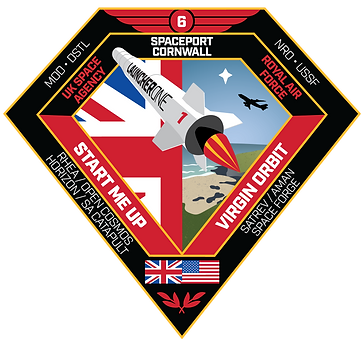top of page
Spaceport Cornwall VR
Spaceport Cornwall is a brand-new educational VR experience which sees users experience the first-ever satellite launch from UK soil, which took place from Spaceport Cornwall earlier this year.

My contributions to Spaceport VR
-
Worked in tandem with the art team and programmers, ensuring seamless interaction between design and technology.
-
Implemented various tweaks to the scenes to enhance visual quality and maintain high performance.
-
Provided subtitles for all speakers, and integrated speaker videos into various scenes, increasing the accessibility and immersion of the experience.
-
Successfully managed the process of getting the project onto AppLab.
-
Simplified user interactions across scenes to improve accessibility and ease of use.

Design Intentions
An immersive, educational VR experience that transports users to the first-ever satellite launch from UK soil, taking place at Spaceport Cornwall. This project aimed to offer an easy-to-navigate, highly optimized, and accessible experience to VR beginners, providing a unique educational tool for space exploration enthusiasts.
From the beginning, we targeted the Meta Quest 2 platform as it was highly portable and had the largest audience. This meant we had to optimise everything in the project in order for the low-powered headset to be able to run the experience.
Challenges & Solutions
Performance
From the outset, we were besieged with challenges in relation to the performance. When I first joined the team, (2 months after the initial project had started), I was shocked to find out that none of the members had tested the experience on the Quest 2 standalone.
I promptly built the project and found that the average framerate was around 10fps which caused nausea and sim sickness. I quickly relayed this back to the team and we began optimising at once.
My first instinct was to use the Unity Profiler in order to work out what exactly was causing the low performance and I found that it was mostly the art and terrain that were causing the issues.
The terrain was the default unity terrain which uses a high-density mesh in order to be easily changed, in order to solve this I spoke with the artists and we managed to replace it with a flat plane.
When inspecting the items in the scene, I discovered some assets were extremely high poly and unoptimised for VR. An example of this was a 20k poly fence or a 100k poly car that was just background items that you could see from a window inside.
To solve this I spoke with an artist and we managed to create a fake fence that was in fact just a plane as well as remove the cars as they weren't necessary.
After just these few changes, we discovered that performance had increased to around 60fps. However, we were targeting 72fps minimum with 90fps being ideal. This is because the Meta Quest 2 has a 72Hz display and anything lower than that contributes to cybersickness.
After running through the profiler a bunch, we discovered that the Speaker videos which would share information about the experience, were causing significant issues with the RAM on the headset. This was because each video was around 6GB in size and the headset was trying to store all 6GB before playing.
To solve this we compressed every video so it was around 30 MB as well as decreased its quality in unity. After doing this we found performance was above our target in every scene.
Guiding the user
During playtesting, we discovered that many users found it difficult to navigate the virtual spaceport buildings and managed to get lost. To solve this we came up with colour-based signposting.
To show players where to go, we had a blue outline or a large blue column of light to help direct the player. All navigation or areas of interest were highlighted in blue. To convey what was interactive in the experience, interactables would have a yellow glow. This included buttons and objects you could grab.
With these simple colour-based additions players were finding it much more easy to explore and understand what they could do in the experience.
Reflection
The spaceport project is something I will cherish forever and am so immensely grateful to have been a part of such an incredible project.
I have always loved astronomy, and almost studied it at university, instead choosing to study Creative Virtual Reality, so being a part of this project brought both of those passions together.
The project was a tremendous success, set to launch later this month. It has received high praise, underlining the exceptional talent and the successful collaboration of our diverse team.
From this project, I have learnt so much and met so many amazing people. I am very proud of my contribution to the project and the design of the experience.
If I were to do it again, I would encourage much more frequent builds on Quest 2 as well as increasing interactivity as we found that some areas were very bland for those not interested in what the speaker was talking about.
bottom of page






